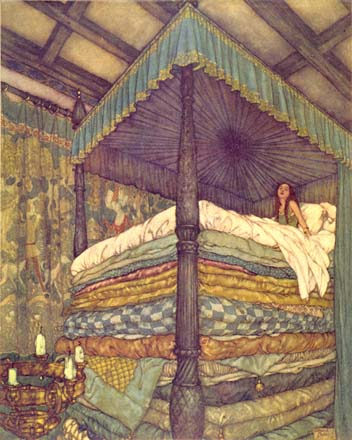Living in the Body – Writing from the Senses

Showing Not Telling – how the Body Knows
Writers studying their craft have it hammered into them: “Show don’t tell.” Showing through sensuous detail is the most effective method for engaging a reader and drawing him or her into a story. The showing creates an individualized picture that lives in the reader’s body; creates an experience that enlivens and enriches every encounter on the page. And it does this through the power of sensuous detail – what can be seen, certainly, and most books focus on vision as the primary (and sometimes sole) sensory input. But powerful fiction also incorporates hearing, touch, taste and smell (the most oft neglected sense in writing).
Using sensuous detail to show the story is not only for the reader, however. This is also the most powerful way to draw the writer into the creative act and the world that he or she is creating.
In the beginning of Anna Karenina, Tolstoy decrees that “All happy families resemble one another; every unhappy family is unhappy in its own way.” Telling versus showing is much the same – when stories are “told” they sound like every other similar story, but those that are “shown” leave an individualized and indelible imprint on the reader’s imagination through conjuring up sensory perceptions in the reader’s brain.
For example, most fairy tales begin with “Once upon a time” thereby immediately distancing the reader from the action by removing it to a far off time and place. Then they continue their mode of telling. Consider the short fairy-tale “The Princess and the Pea” in the sidebar. We are told that the princess arrived at the castle and that “The water ran down from her hair and clothes; it ran down into the toes of her shoes and out again at the heels.”

Okay, so we have a visual here. But how much more would the reader feel the scene if the old king had reached out a hand to draw her into the castle and had felt how chilled and wet her skin felt, had smelled the fresh night air and the ozone caught in her hair, and heard how her shoes squelched with water at every step as she entered, and how the sound of the rain and the thunder faded behind them as they penetrated into the warmth of the castle? And how much better would we have understood the sensitivity of the princess if we had crawled into bed with her, felt her sink into the warmth and luxury of all those mattresses and eider-down beds and then felt that pea pressing into her like a pebble in one’s shoe? Pressing into her hips, her spine, her ribs as she tossed and turned trying to find relief, felt the tenderness of her bruises in the morning as the servant woke her up, the scent of coffee wafting from the tray in the servant’s hands.
As I was writing this to illustrate my points, I as the writer also experienced these details in my body, and that drew me into that world. As I focused on each sensuous element, other details opened up for me. Focusing on the squelch of her slippers led me to the shuffle of their footsteps along the passage, and the way that sound echoed up ahead of them. “Oh,” noted my unconscious, “they’re in a stone passage.” I also immediately had hints of vision – the king is carrying a torch and the shadows waver and flare around them, and the small globe of light moves along the dark passage with them.
Try it for yourself. Find a fairy tale (there are thousands on the Web) and choose a passage from it where we are told what is happening. Now enter into the experience and include information from all the senses that would be experienced if you were actually there. Read the two pieces over when you’re done and see the difference.
The piece that you wrote will be longer, and if the whole fairy tale were written that way, it would be much longer. Stories which incorporate sensuous detail naturally move at a slower pace, just as it takes time and attention to live in the present, mindful to the world around you. Stories which incorporate sensuous detail can’t be rushed through, can’t just be “told”. But the pay-off is that the writer – and the reader – are fully immersed in the experience and emerge richer for it at the other end.
Example:
The Princess and the Pea
By Hans Christian Andersen (1835)
ONCE upon a time there was a prince who wanted to marry a princess; but she would have to be a real princess. He travelled all over the world to find one, but nowhere could he get what he wanted. There were princesses enough, but it was difficult to find out whether they were real ones. There was always something about them that was not as it should be. So he came home again and was sad, for he would have liked very much to have a real princess.
One evening a terrible storm came on; there was thunder and lightning, and the rain poured down in torrents. Suddenly a knocking was heard at the city gate, and the old king went to open it.
It was a princess standing out there in front of the gate. But, good gracious! what a sight the rain and the wind had made her look. The water ran down from her hair and clothes; it ran down into the toes of her shoes and out again at the heels. And yet she said that she was a real princess.
“Well, we’ll soon find that out,” thought the old queen. But she said nothing, went into the bed-room, took all the bedding off the bedstead, and laid a pea on the bottom; then she took twenty mattresses and laid them on the pea, and then twenty eider-down beds on top of the mattresses.
On this the princess had to lie all night. In the morning she was asked how she had slept.
“Oh, very badly!” said she. “I have scarcely closed my eyes all night. Heaven only knows what was in the bed, but I was lying on something hard, so that I am black and blue all over my body. It’s horrible!”
Now they knew that she was a real princess because she had felt the pea right through the twenty mattresses and the twenty eider-down beds. Nobody but a real princess could be as sensitive as that.
So the prince took her for his wife, for now he knew that he had a real princess; and the pea was put in the museum, where it may still be seen, if no one has stolen it.
There, that is a true story.







Leave a Reply
You must be logged in to post a comment.